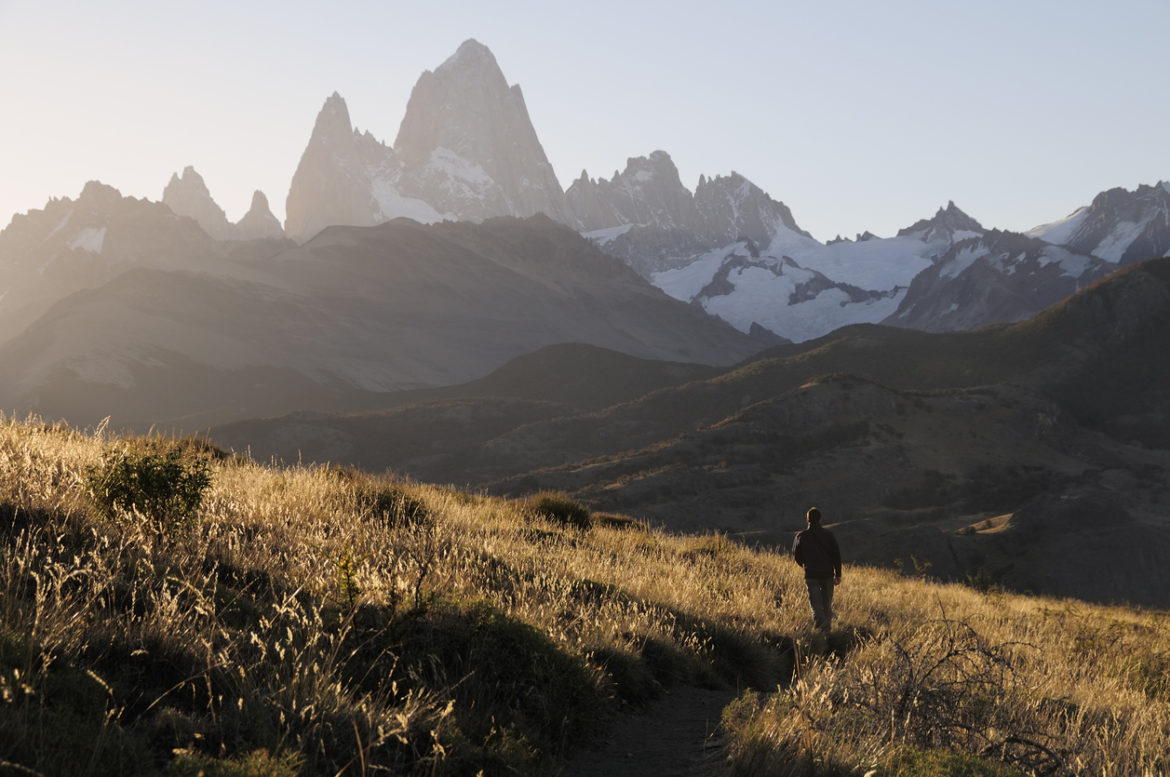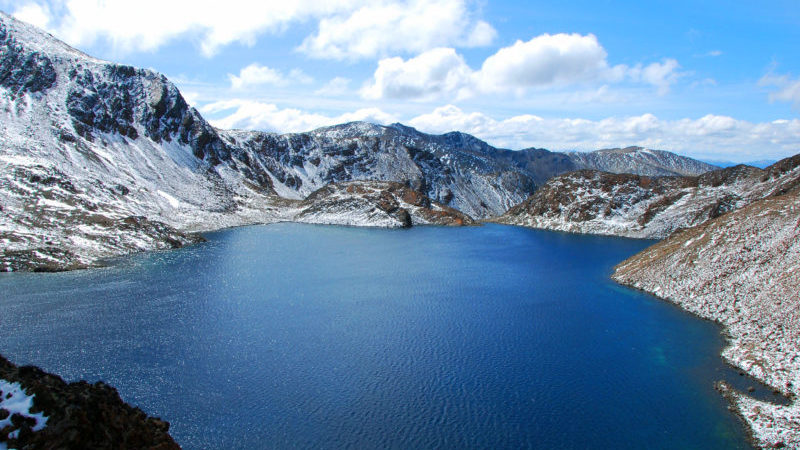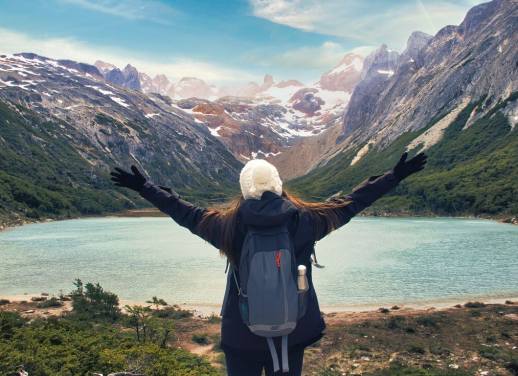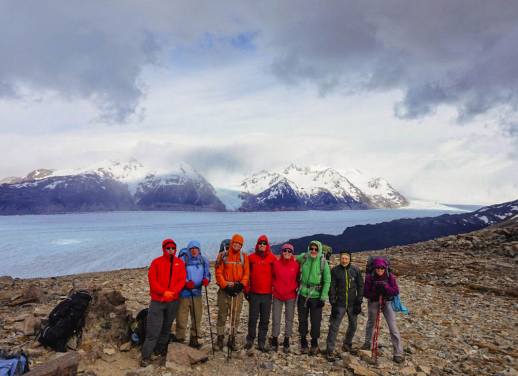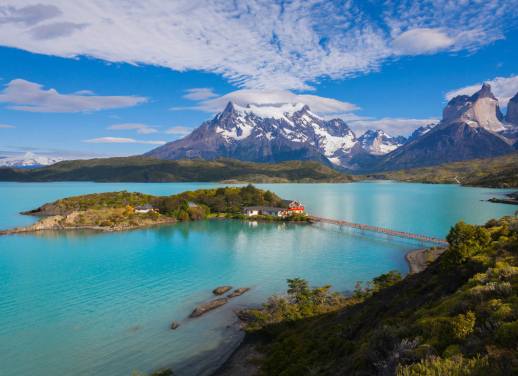Patagonia. The word rolls off your tongue and has you dreaming of faraway lands filled with dramatic landscapes. It’s fair to say that the reality doesn’t disappoint.
Chile and Argentina share the vast South American region. It boasts glaciers, mountains, waterfalls, and an array of unique flora and fauna. The beauty is sensational, the landscapes breathtaking, and it really is a paradise for hikers. Not that any number of adjectives really do the beauty justice…
Beware, though. Patagonia can be as treacherous as it is stunning. You need to be prepared in order to truly enjoy its wonders – the weather is ever-changing, and trekking conditions can be tough. So, we’ve put together a little guide to ensure you make the most of it: hiking tips, safety tips, advice from Intrepid leaders, and more…
Treks in Argentina and Chile
Both El Chaltén, Argentina’s trekking capital, and Torres del Paine National Park, Chile, offer a multitude of both moderate and difficult hikes.
Here’s a selection of the most notable hikes in Chilean and Argentinian Patagonia:
Hikes in Chilean Patagonia
Torres del Paine National Park is an obvious place to start in Chile. The region is known for icebergs, mountains, grasslands, and rare wildlife such as llama-like guanacos. There’s also day treks for all abilities.
The ‘W Trek’ is the most iconic and well-known hiking route in Torres del Paine, so-called because of its trail system which navigates up and down the mountain valleys. It takes around four days to do its dramatic beauty justice as there’s simply so many scenic spots and look-out points to explore.
For those who are intent on a true adventure outside of Torres del Paine, a (lengthy) hike to Cabo Froward is a good option. In reaching the most southerly point on the continent you pass swamps, cliffs, pebble beaches, and other rugged scenery, and even have the joy of experiencing river crossings!
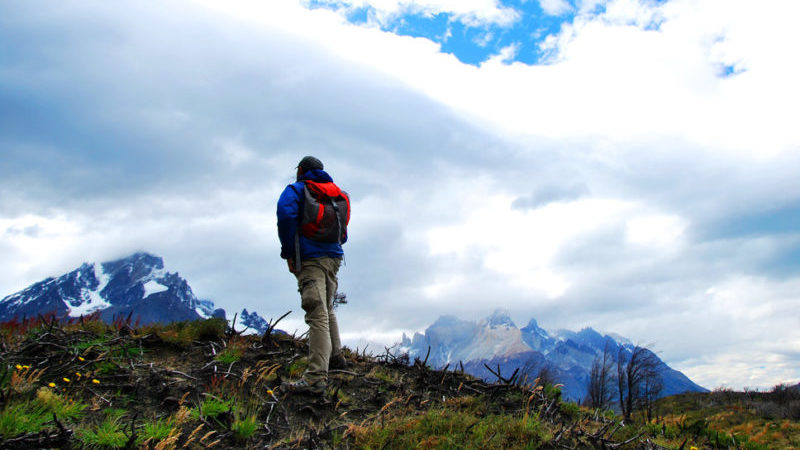
Trekking in Torres del Paine National Park
READ MORE: 4 CAN’T MISS DESTINATIONS IN CHILE (THAT AREN’T IN PATAGONIA!)
The most popular trek in this area is locally known as “Base Las Torres” (The Tower’s Base). If you visit with Intrepid, your leader will recommend when to take this hike, depending on weather conditions.
Another epic hike is towards “Refugio Los Cuernos” (The Horns’ Lodge). This trek is long, but it has amazing views of “Los Cuernos del Paine” (known as “The Horns” because of its granite peaks in the shape of forms).
Both of these treks are moderate to difficult, and take between five and eight hours to finish. Though the trails are clearly-marked, weather is less defined, and is likely to be cold, wet or windy.
 Hikes in Argentinian Patagonia
Hikes in Argentinian Patagonia
The frontier town of El Chalten, north of Glacier National Park, has a laid-back atmosphere filled with people from all over. The two most popular day treks here, Laguna de los Tres and Laguna Torre, are moderate to difficult.
Expect six to nine hours of walking on fairly easy terrain. Although wind and rain might be problematic, the well-maintained and clearly-marked paths won’t be. And the sights are truly out of this world… to experience them check out this 15-day trip to Patagonia.
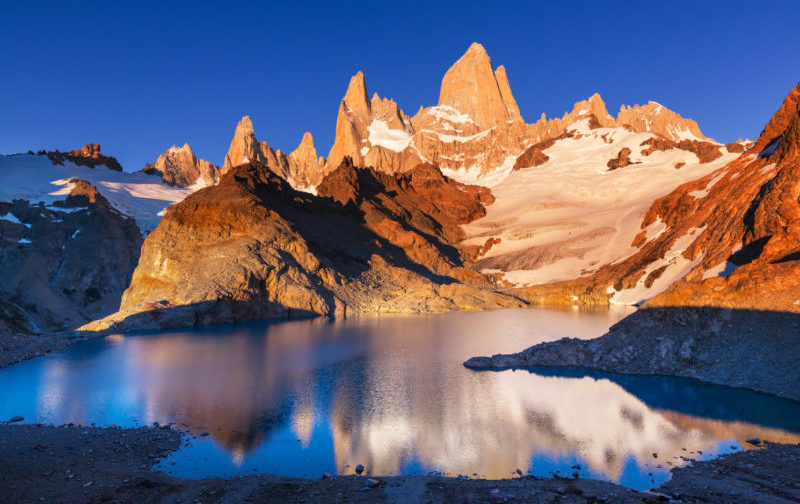
Fitz Roy, which straddles the border between Argentina and Chile
Hike recommendation from Fernando Rodriguez, Intrepid’s Ops Manager in South America:
I love the Laguna de los Tres day trek. It starts with a gentle walk uphill that leads to a wonderful view of El Chalten town. The trail then meanders gently up and down, passing by loads of native flora and Calafate trees. Once you reach Laguna Las Tres lake it’s usually lunchtime, and you can sit right next to the lake and enjoy the view of the magnificent Mount Fitz Roy.
 Also worth noting is that Argentina is home to the southernmost city in the world, Ushuaia – a truly fascinating place to visit, and one that’s home to even more hikes. Five miles north of town, Martial Glacier overlooks the bay; hiking is very popular on its flanks as well as skiing in the colder months.
Also worth noting is that Argentina is home to the southernmost city in the world, Ushuaia – a truly fascinating place to visit, and one that’s home to even more hikes. Five miles north of town, Martial Glacier overlooks the bay; hiking is very popular on its flanks as well as skiing in the colder months.
Ushuaia is also the gateway to Parque Nacional Tierra del Fuego, Argentina’s only coastal park.
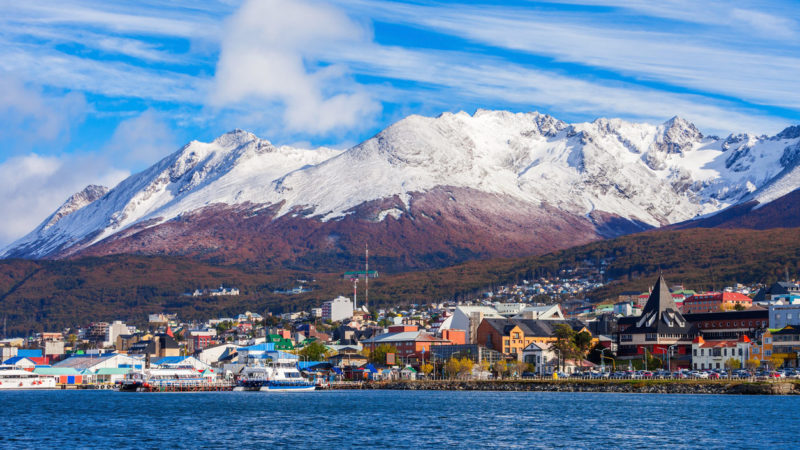
Ushuaia on a beautiful, clear day
In Ushuaia it’s a good idea to check out the array of museums on offer, sample some Fuegian delicacies, and explore the Beagle Channel. This majestic waterway just south of the city is stunning, and boasts plentiful marine wildlife and small islands. Even better, if you visit with Intrepid, a boat trip through it is included!
RELATED READING: WHAT IT’S LIKE VISITING USHUAIA, THE WORLD’S SOUTHERNMOST CITY
Patagonia trekking rule 1: be prepared
Hiking in Patagonia is a rewarding activity but, as is clear, is not one to be taken lightly. Get ready to enjoy the beautiful scenery, to marvel at glaciers, but also to push your limits on the region’s stunning hiking trails.
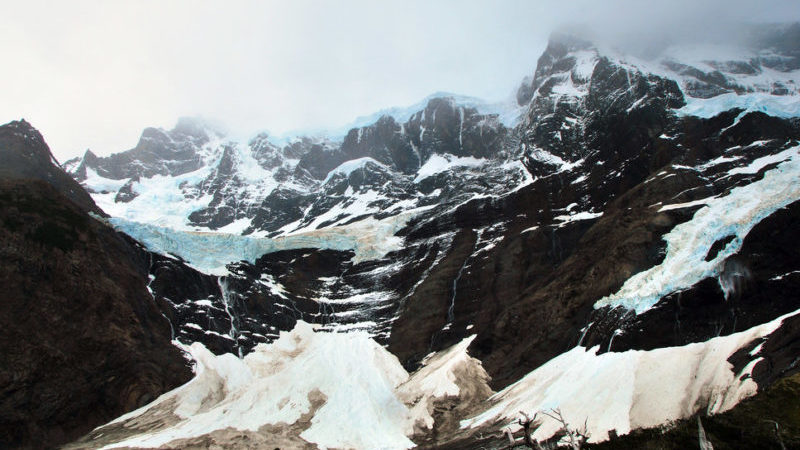
Torres del Paine National Park
How to prepare for a trip to Patagonia
It’s worth undertaking regular exercise in the months before you travel, particularly if you are not in the habit of doing so. Doing mountain walks or even just climbing long staircases with a pack is useful preparation. As is walking, jogging, swimming or riding a bike.
Walking boots need to be comfortable, lightweight and have a good grip. Waterproofing them is also recommended, but the most important thing is to ensure they’re worn-in enough. Better to spend time wearing in a pair than buying new ones!
 What to pack on a trip to Patagonia
What to pack on a trip to Patagonia
Whenever you end up deciding to go, Patagonia is famous for its constantly changing weather. You can experience rain, sun, cold, snow, wind, hail and heat in the same day, sometimes in a matter of hours. Trekking there then doesn’t mean you need the latest gear but it is about using it wisely.
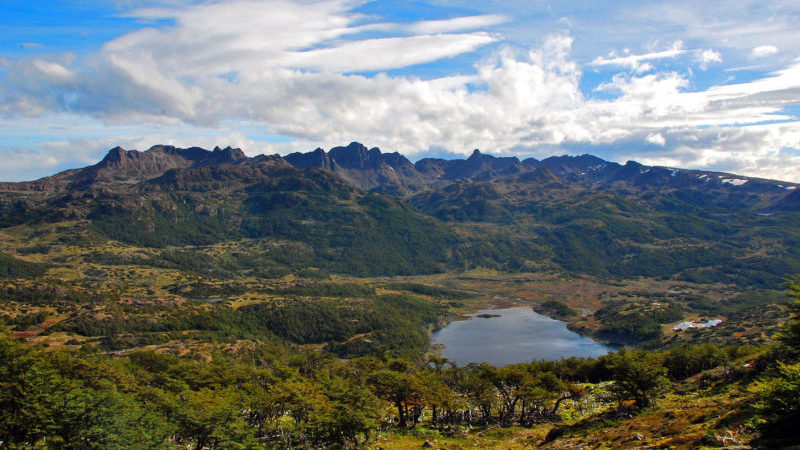
Dientes de Navarino, Chile
In terms of clothing, think layers. Hike in shorts or pants and a short-sleeve shirt, but have the following at the ready in your day pack: a long-sleeve shirt, fleece, rain jacket, hat, gloves and scarf. Wrap them in plastic bags tucked inside your pack then take them on and off according to the weather.
Clothing tips from Fernando, Intrepid’s Ops Manager in South America:
The gas is almost free in Patagonia so the hotel rooms and restaurants can be a bit overheated. So, don’t bring thick woolly pajamas! But do ensure you bring waterproof clothes, hiking boots with ankle support, and a towel for showers (for when you camp in Torres del Paine).
Blowing from the glaciers, the wind can be particularly fierce and freezing; so, hiking poles are handy in order to keep your balance. They’re worth having with you at all times, even if you don’t usually hike with them. And seeing as glaciers were mentioned, the natural wonder that is the Perito Moreno Glacier simply must be noted.
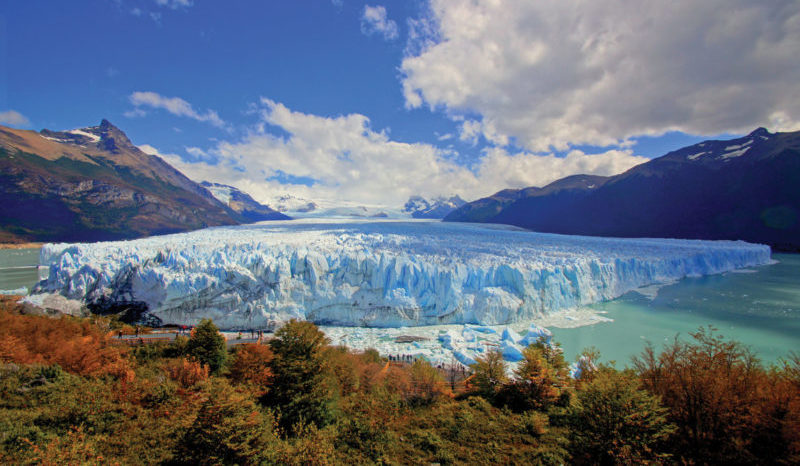
Perito Moreno Glacier, one of the highlights of Argentinian Patagonia.
One of the few glaciers that’s advancing rather than melting, it’s one spectacular sight, and a must-see. If you visit it with Intrepid, you can embark on a mini-trek on the glacier that includes a short cruise to the glacier base.
RELATED READING: WHAT IT’S REALLY LIKE ON AN INTREPID TRIP TO PATAGONIA
Just the same as when you travel to other places, it’s worth bringing a neck wallet or money belt. It’s great for the safe-keeping of your passport, air tickets, cash and other valuable items. And other must-pack items are fairly obvious, but include: a torch (with batteries), an electrical adapter, sun protection, and insect repellent.
Patagonia trekking rule 2: be sensible
Common sense is important in Patagonia, like it is anywhere else. Respect the rules, only camp and cook in designated protected areas, alert park rangers if you see anything amiss, start hiking early, know your strengths and limits, and always help a fellow hiker in need. Simple actions make for a better hike.
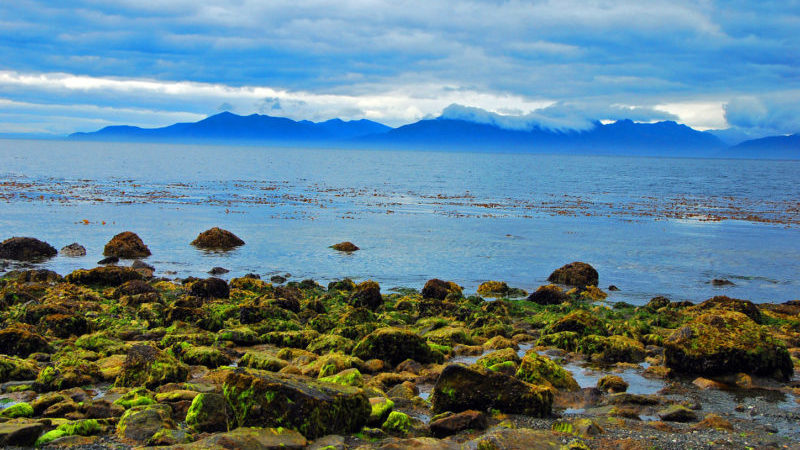
Cabo Froward, the southernmost point of mainland South America
In terms of camping and lodging facilities, it’s best to have fairly low expectations. The region is remote and though campsites have everything you need, they’re pretty basic. Torres del Paine National Park and Parque Patagonia are two examples of parks with lodges and campsites.
The facilities on Patagonia’s trails obviously vary, but as a general rule, toilets tend to be in camping areas and close to trails (though not directly on them).
Patagonia trekking rule 3: be green
The first thing you need to know about hiking in Patagonia is that water from the rivers is drinkable; fresh and clean from the glaciers, so grab your fill every time you cross one. But if you’re worried, feel free to bring water purification tablets like Micropur, which is available from camping stores or pharmacies.
It’s great to pack food with little or no packaging: it’ll lighten your pack and mean you have less trash to carry back with you. Some people like using cloth bags for carrying snacks (they’re light and sustainable!).
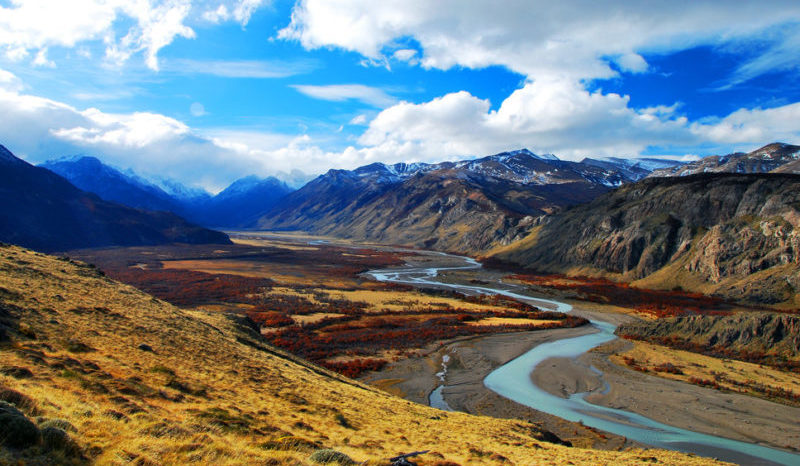
El Chaltén, Argentina
The sale of bottled water contributes to an enormous environmental problem around the world. So, it’s a good idea to bring a water bottle with a 1.5 litre capacity (or two smaller bottles) and then use it the entire trip.
Food tip from Fernando, Intrepid’s Ops Manager in South America:
A perk of traveling with Intrepid is the traditional food you’ll be introduced to. Prepare yourself for delicious cordero patagonico (wood-fire roasted lamb) and congrio (king crab). Also, if you go camping with Intrepid you’ll have breakfast, lunch and dinner provided – so, no hassle!
And last but not least, ensure that your treks leave no trace. Follow the trails at all times and ensure the only things you take with you are memories and pictures.
In other words, there’s no doubt that trekking in Patagonia will be forever engraved in your heart and mind – enjoy the experience to the fullest but make it one that nature won’t remember.
Ready to explore the wild and spectacular region of Patagonia? Check out our range of small group adventures.
—
(Image credits from top to bottom: iStock, Julie Klene x2, Intrepid Travel, iStock, Julie Klene x2, Intrepid Travel, Julie Klene x2)

